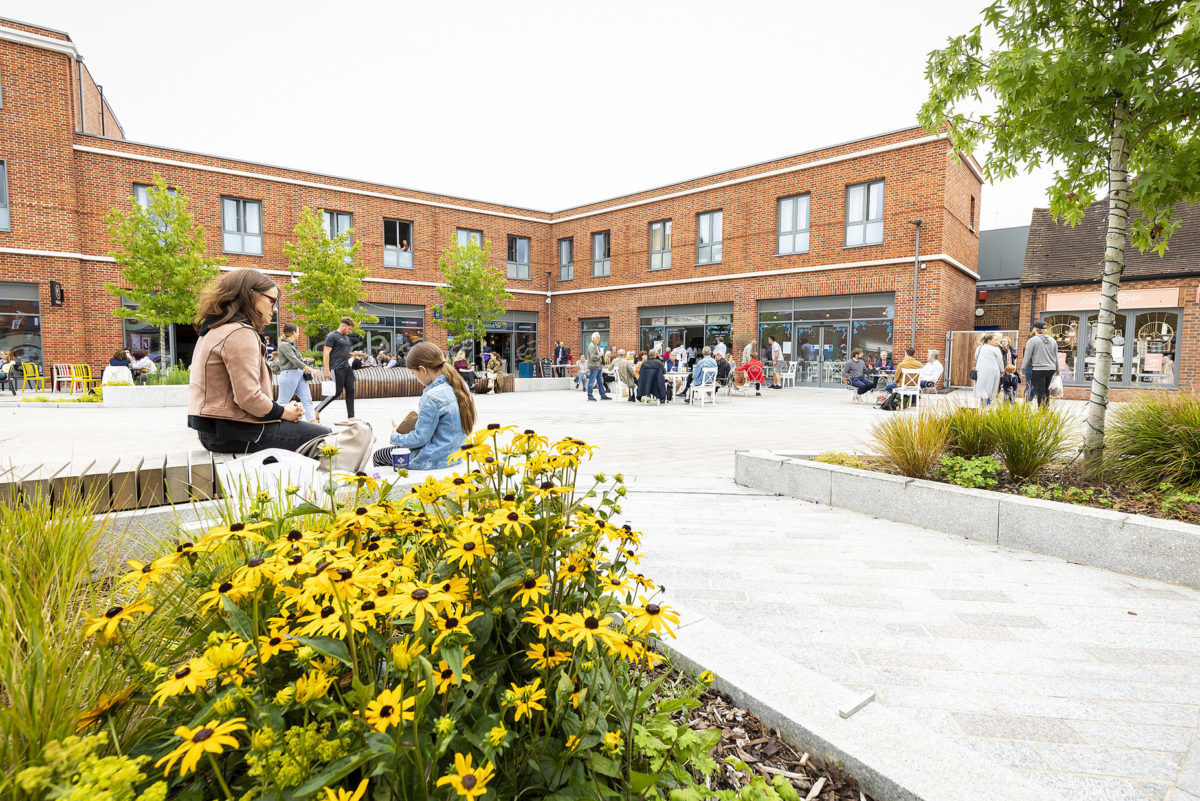At Benoy, we have recently worked on major regeneration projects in Woking and Wokingham; two UK towns losing market share to nearby locations, both in urgent need of renewal.
Situated in neighbouring home counties, and separated by just 16.8 miles, two consonants and a vowel, at first glance Woking and Wokingham might look and sound quite similar. But in reality, they are uniquely different places requiring uniquely different design responses.
Wokingham, on the one hand, with its elegant redbrick townscape and low-scale vernacular architecture, involved a gentle reimagining of urban living focused on family, public realm and community space. Across two mixed-use developments, we combined heritage residential developments, modern retail formats, F&B, hospitality and leisure, with a beautifully landscaped park at the heart of the scheme.
Woking, meanwhile, called for a more contemporary design, with high-density living above two new public spaces. Our work here comprised retail and hospitality activating the ground plane, with a strong focus on timeless façades, blended typologies and tenure mixes. Through the integration of two build-to-rent residential towers above a podium, the aim was to provide a rich mix of uses. We also delivered a wealth of positive ground-scaping to create a vibrant destination that combines country, city, culture and community.
Two superficially similar towns, two very different design solutions. But how did we arrive at such monumental contrasts of architectural style, scale and approach?


